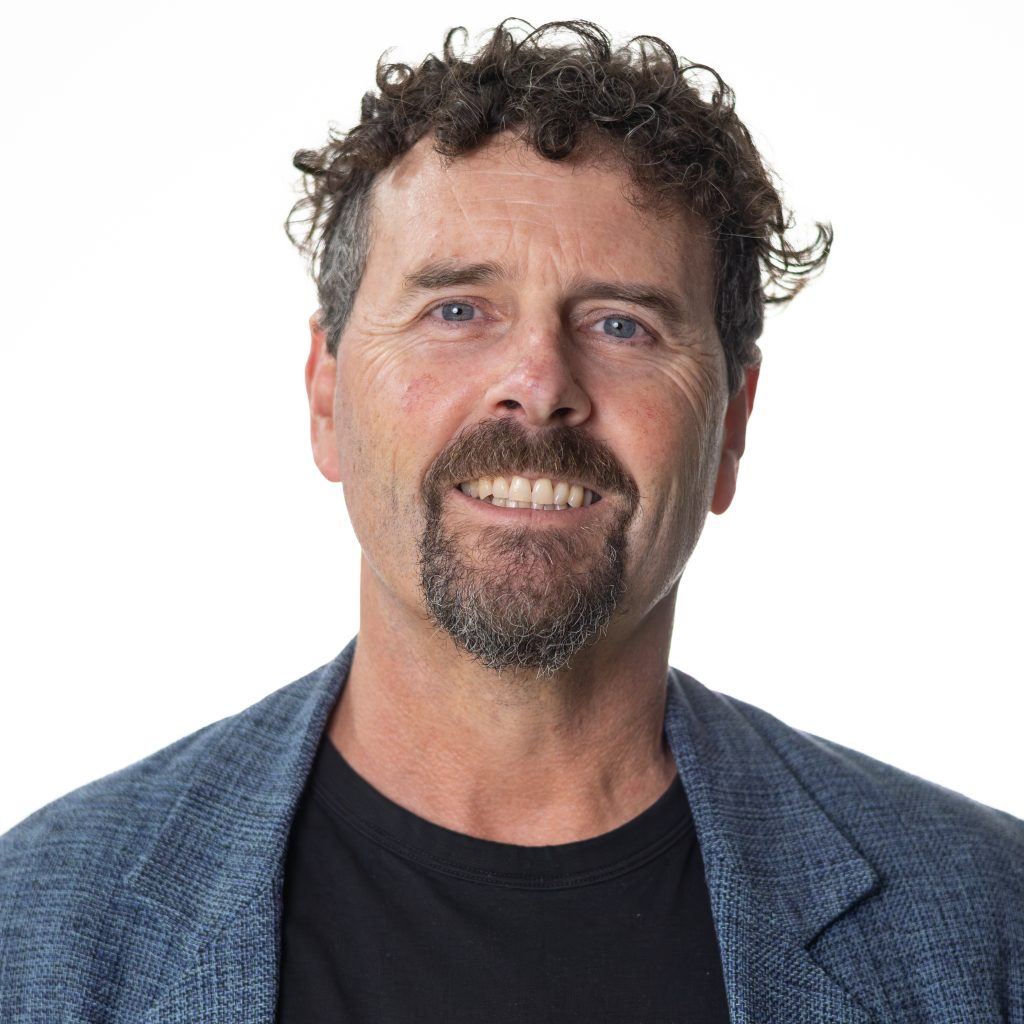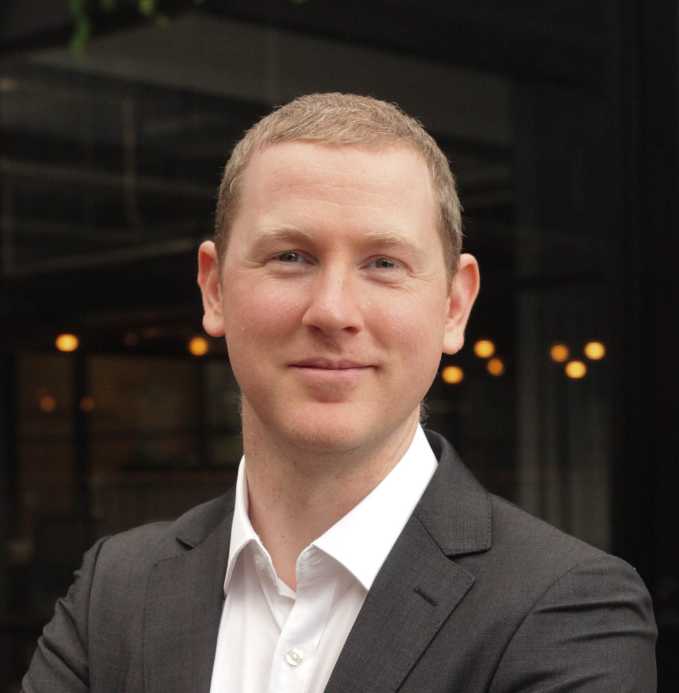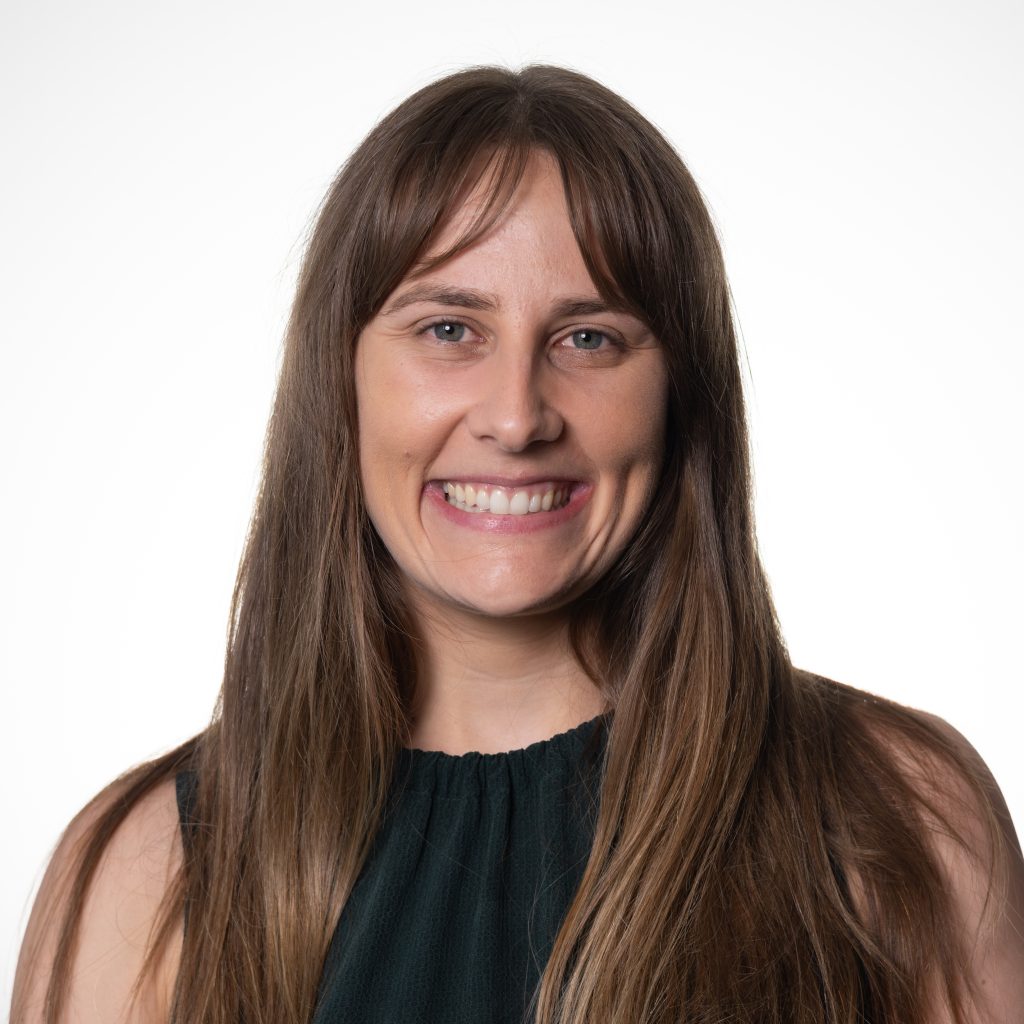Predicting the unpredictable: Investing in science and technology for the next decade
From discovering Earth-like planets to revolutionising medical imaging for earlier diagnostics – we are aiming for high-impact outcomes at COMBS. A key step in achieving this is bridging the gap between researchers and end-users to align our research with society’s biggest future challenges.
The challenge
Researchers and industry are siloed and speak different technical languages
To turn research into real-world impact – like our GPS, ChatGPT or consumer electronics – we need our fundamental research to address society’s biggest future challenges.
For us at COMBS, our researchers need to anticipate industry’s needs five to ten years ahead, identifying where microcombs could have the greatest societal impact.
A key step is directing our research towards this market need, but a major barrier is the communication gap between researchers and industry. Both often operate in silos, speak different technical languages and can be reluctant to share their challenges openly.
This disconnect makes collaboration difficult, ultimately slowing progress in translating research into tangible, real-world solutions.
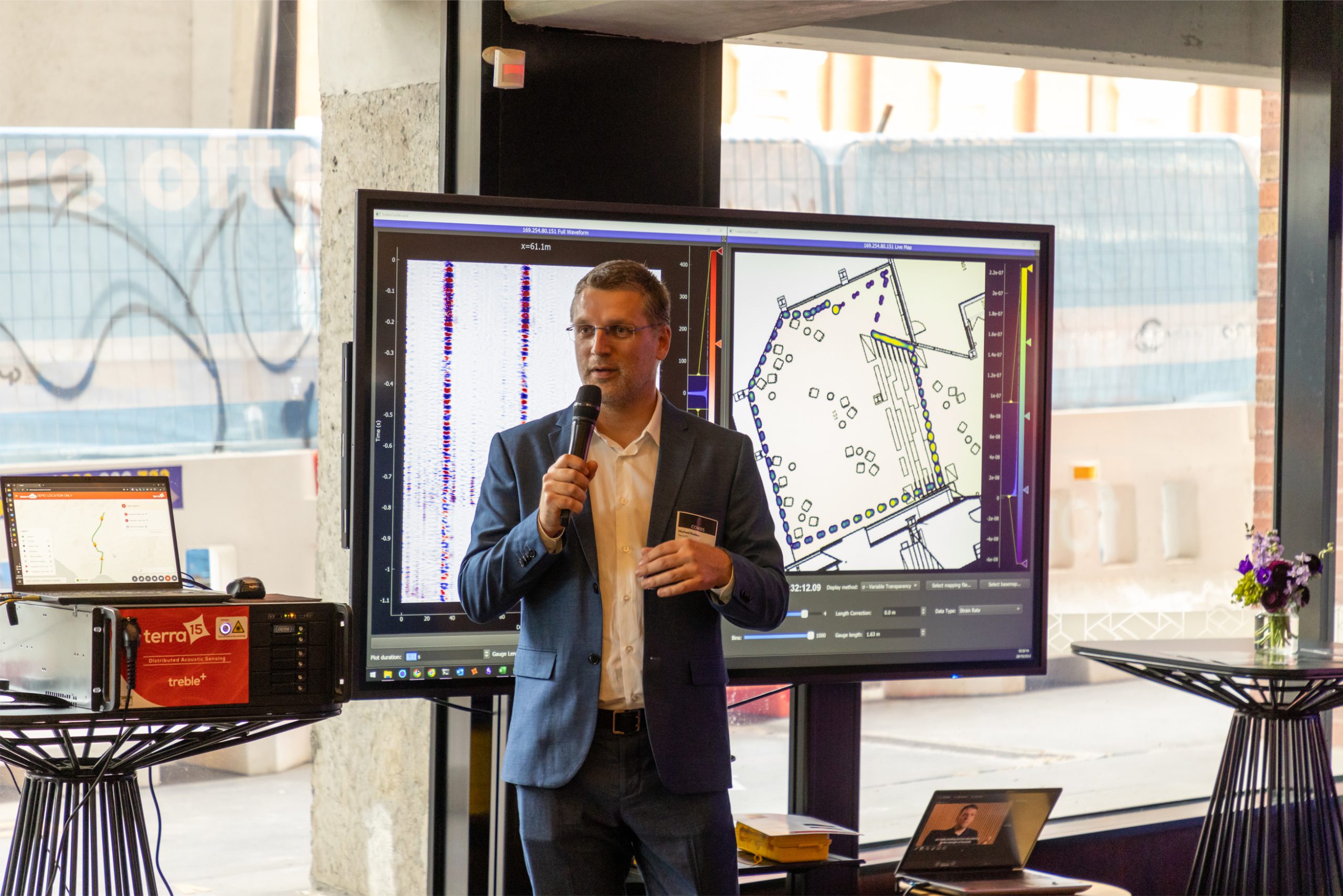
Michael Roelens demonstrating Distributed Acoustic Sensing at the COMBS launch
Our response
Bringing together researchers and industry at our COMBS Launch
Bridging the communication gap between researchers and industry starts with direct engagement, where they can come together to discuss their technical challenges.
The COMBS Launch in 2024 exemplified this, by bringing together researchers and industry partner Terra15 together.
A live demonstration showcased Distributed Acoustic Sensing (DAS) – which repurposes our internet’s optical fibres into sensors – for earthquake monitoring, leak detection or even measuring the ‘seismic activity’ of the room as attendees jumped in unison.
The panel discussion between seismologist Meghan Miller and Michael Roelens from Terra15 highlighted their shared need for technology that could rapidly process vast data streams from their optical fibre sensors.
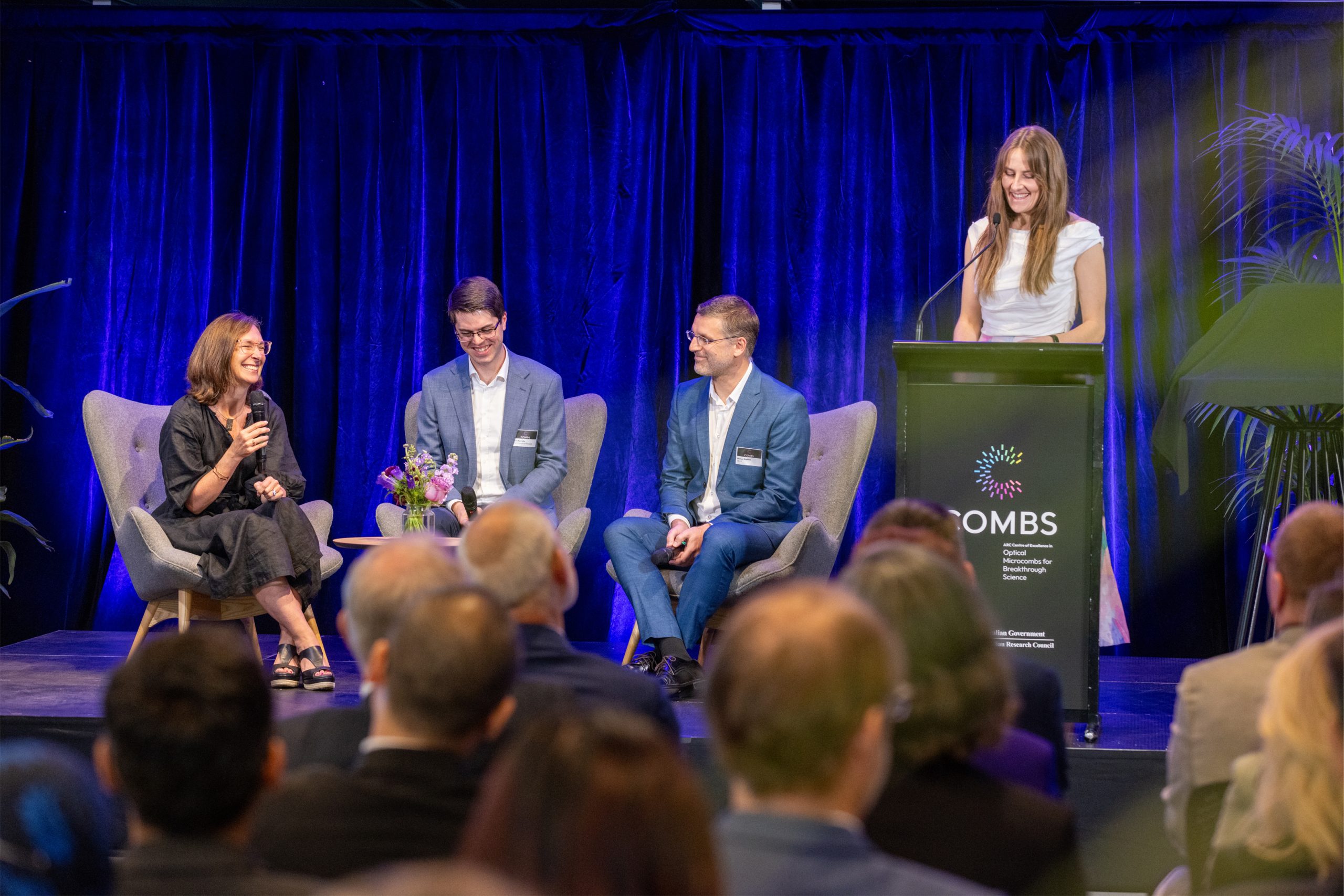
Meghan Miller, Christopher Perrella, Michael Roelens and Rachael Vorwerk at the COMBS launch
The results and current progress
Researchers and industry collaborate to anticipate society’s biggest future challenges
The panel discussion and real-world demonstration highlighted two applications where microcombs could offer a solution to Distributed Acoustic Sensing (DAS).
Meghan needs a tool to process the vast amounts of seismic data from optical fibres for real-time earthquake monitoring, while Michael (Terra15) seeks emerging technologies to improve water leak detection in pipelines. Microcombs could be a tool to address both of these challenges.
The event showcased current state-of-the-art technology and its future potential, providing a clear pathway to impact for our COMBS researchers.
Using this event as a blueprint, the Impact and Translation committee will continue to enable direct engagement – via industry days and pitch events – to ensure our research continues to align with society’s biggest future challenges.
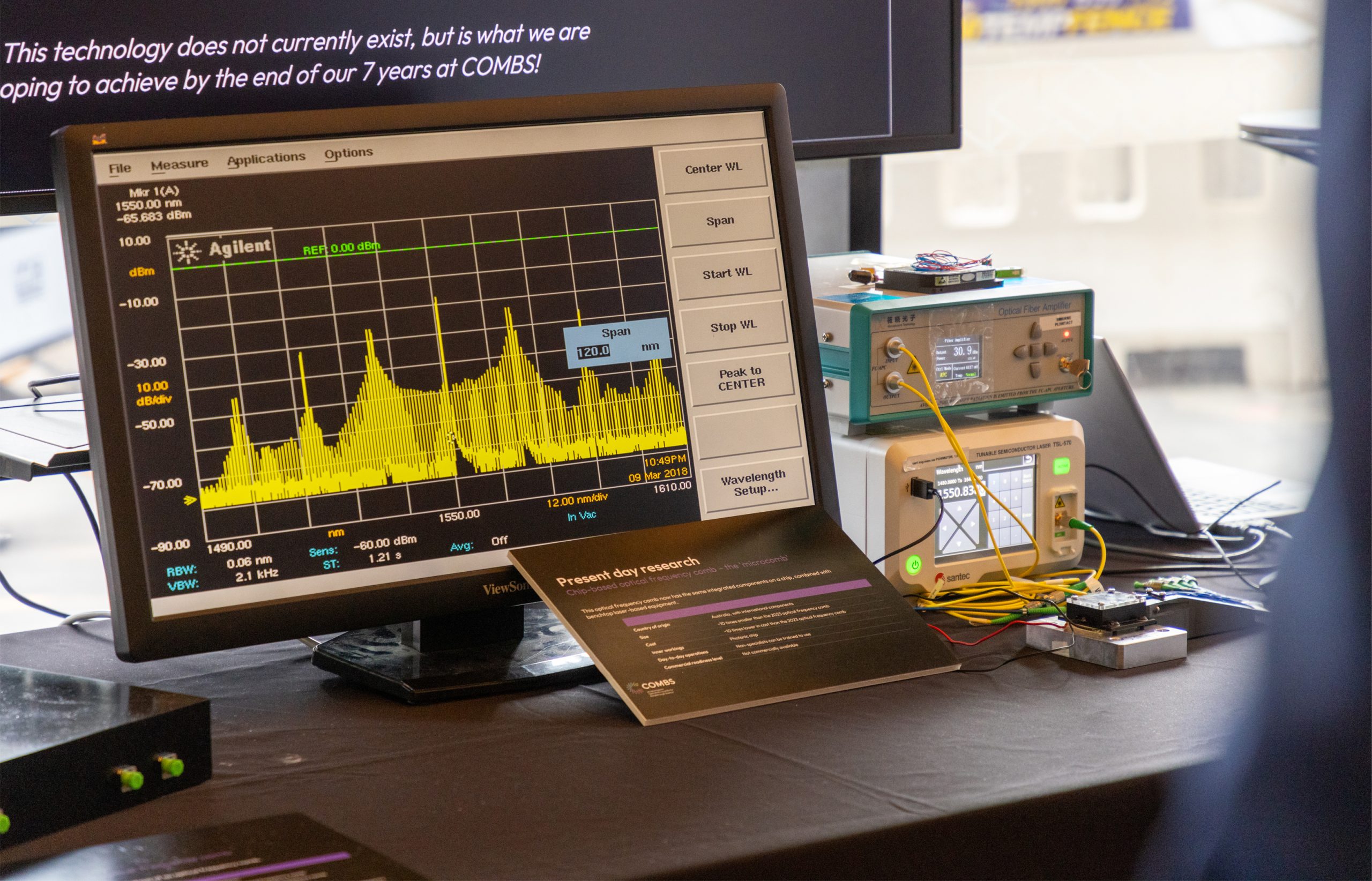
Showcasing current state-of-the-art technology and its future potential at the COMBS launch


